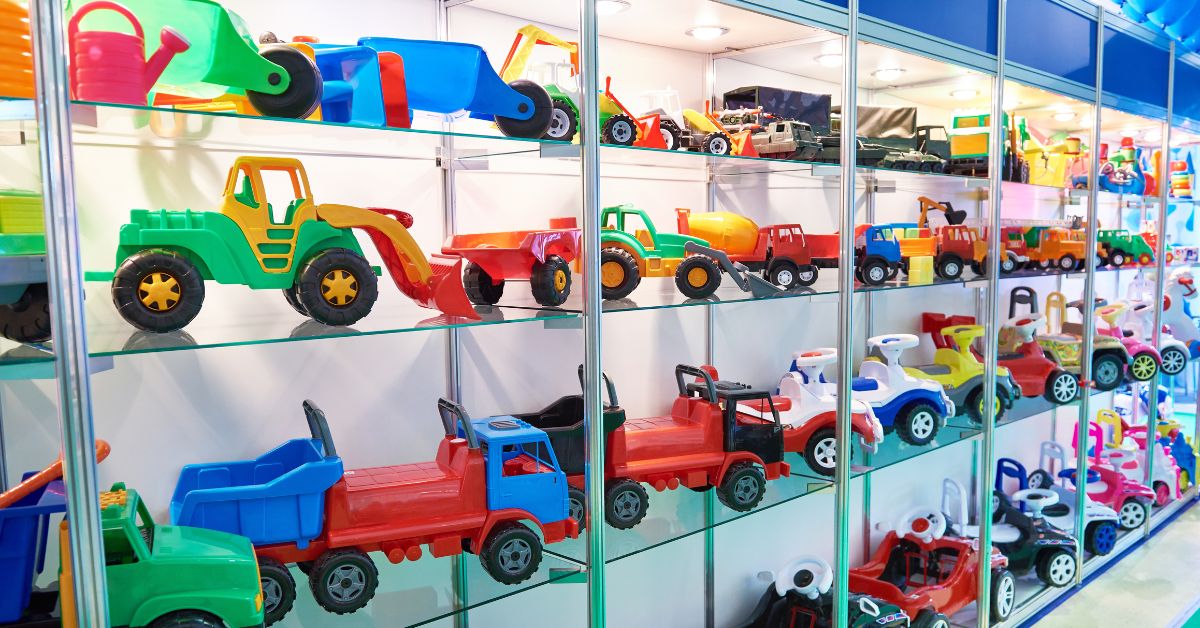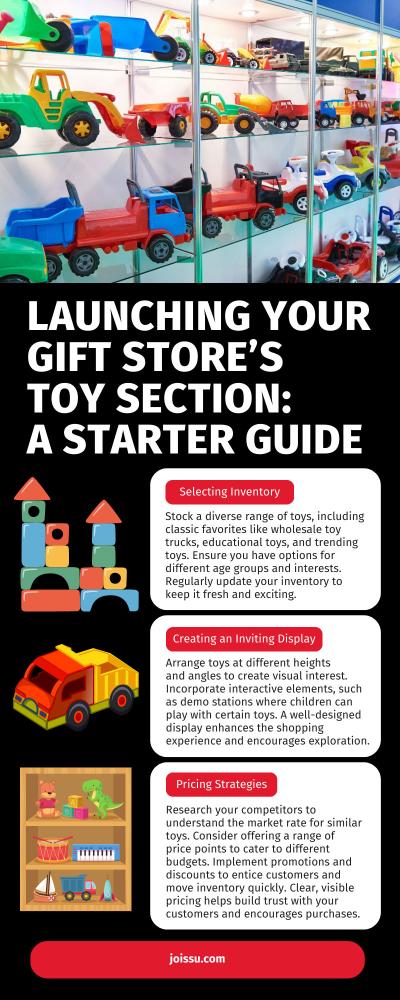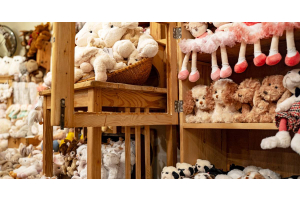
Launching a toy section in your gift store can be an exciting and profitable venture. With careful planning and strategic execution, you can create a toy department that attracts customers and boosts your sales. This starter guide will walk you through the essential steps to launching your gift store’s toy section, from selecting inventory to effective marketing strategies.
Understanding Your Target Market
Understanding your target market before you begin is crucial. Identify the age groups and interests of the children and parents who will be shopping in your store. Conduct market research to gather insights on popular toys and trends. Knowing your audience will help you stock the right products and tailor your marketing efforts to meet their preferences and needs.
Choosing the Right Location
The location of the toy section within your gift store will play a significant role in its success. Choose a high-traffic area that is easily accessible and visible to customers as they enter the store. Position the toy section near complementary items such as greeting cards, party supplies, or seasonal gifts. This strategic placement encourages purchases and ensures maximum exposure for your toy products.
Selecting Inventory
Carefully selecting your inventory is critical for attracting customers and driving sales. Stock a diverse range of toys, including classic favorites like wholesale toy trucks, educational toys, and trending toys. Ensure you have options for different age groups and interests. Regularly update your inventory to keep it fresh and exciting. Consider partnering with reputable suppliers to ensure high-quality products that meet safety standards.
Creating an Inviting Display
An inviting display can make a significant difference in attracting customers to your toy section. Use bright colors, eye-catching signage, and creative layouts to draw attention. Arrange toys at different heights and angles to create visual interest. Incorporate interactive elements, such as demo stations where children can play with certain toys. A well-designed display enhances the shopping experience and encourages exploration.
Pricing Strategies
Setting the right prices is crucial for attracting customers and ensuring profitability. Research your competitors to understand the market rate for similar toys. Consider offering a range of price points to cater to different budgets. Implement promotions and discounts to entice customers and move inventory quickly. Clear, visible pricing helps build trust with your customers and encourages purchases.
Staff Training
Well-trained staff can significantly enhance the customer experience in your toy section. Provide your team with training on the features and benefits of different toys. Equip them with knowledge about age-appropriateness and safety guidelines. Encourage staff to engage with customers, offer recommendations, and provide assistance with selecting the right toys. Friendly, knowledgeable staff can create a positive shopping experience and foster customer loyalty.
Marketing and Promotion
Effective marketing and promotions are essential for driving traffic to your toy section. Utilize a mix of online and offline channels to reach your target audience. Create engaging social media posts showcasing your toys, host in-store events or toy demonstrations, and collaborate with local schools or community groups for promotions. Offering special deals and discounts during holidays and peak shopping seasons can also boost sales.
Leveraging Seasonal Trends
Capitalize on seasonal trends and holidays to boost your toy section’s appeal. Stock up on toys related to popular holidays such as Christmas, Easter, and Halloween. Create themed displays and promotions to attract customers during these peak periods. Seasonal trends can drive significant traffic to your store and increase sales.
Incorporating Customer Feedback
Customer feedback is invaluable for improving your toy section and ensuring it meets your customers' needs and preferences. Encourage customers to leave reviews and provide feedback on their shopping experience and the products they purchase. Use this information to identify popular items, understand customer preferences, and make informed decisions about inventory and displays.
Address any negative feedback promptly and use it as an opportunity to improve. Positive reviews and testimonials can also be used in your marketing efforts to build trust and attract new customers. Regularly incorporating customer feedback helps create a more responsive and customer-focused shopping experience.
Hosting Events and Workshops
Hosting events and workshops can create excitement and draw customers to your toy section. Organize toy demonstrations, craft sessions, or storytelling events that engage children and parents. These activities not only provide entertainment but also allow customers to interact with your products. Events create a sense of community and can increase foot traffic to your store.
Building an Online Presence
An online presence is essential for reaching a broader audience and driving sales. Create a user-friendly website showcasing your toy inventory and offering online shopping options. Utilize social media platforms to engage with customers, share updates, and promote special offers. An online presence enhances your store’s visibility and provides a convenient shopping option for customers who prefer to shop from home.
Managing Inventory
Effective inventory management ensures that you have the right products in stock and minimizes the risk of overstocking or stockouts. Implement an inventory management system to track sales, monitor stock levels, and reorder products as needed. Regularly review sales data to identify trends and make informed decisions about inventory adjustments. Efficient inventory management helps maintain a well-stocked toy section that meets customer demand.
Fostering Customer Loyalty
Building customer loyalty is essential for the long-term success of your toy section. Implement loyalty programs that reward repeat customers with discounts, exclusive offers, or early access to new products. Provide exceptional customer service to create a positive shopping experience. Engage with your customers through newsletters, social media, and personalized communication. Loyal customers are more likely to return and recommend your store to others.
Expanding Product Lines
As your toy section grows, consider expanding your product lines to include related items such as books, games, and puzzles. Offering a variety of products that complement your toy selection can attract a wider audience and increase sales. Regularly assess market trends and customer feedback to identify opportunities for expanding your inventory. Diversifying your product lines keeps your store fresh and appealing to customers.
Now that you know how to launch a successful toy section in your gift store, you can confidently take the necessary steps to make it a reality. Remember to regularly update your inventory with popular items like wholesale toy trucks to keep your selection fresh and exciting. By following this guide, you'll be well on your way to creating a thriving toy section that delights customers and boosts your store’s profitability.







